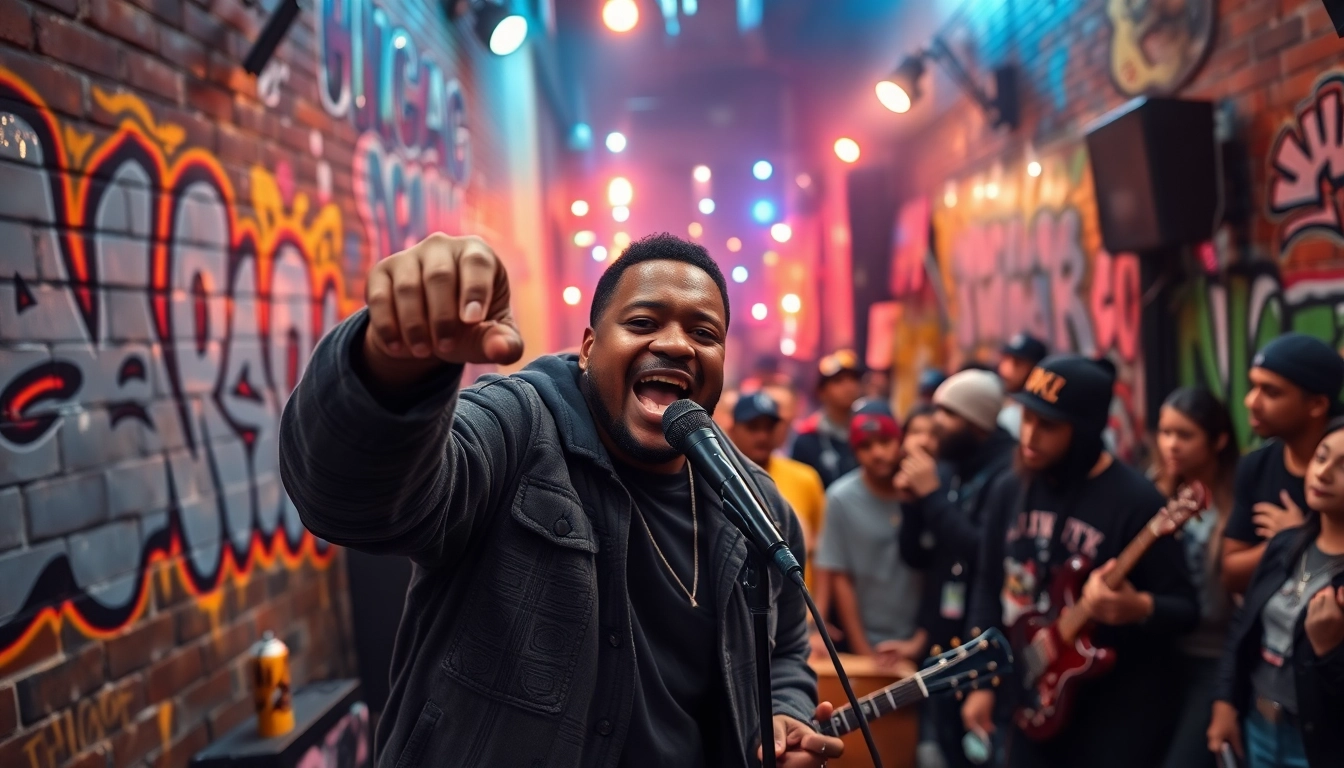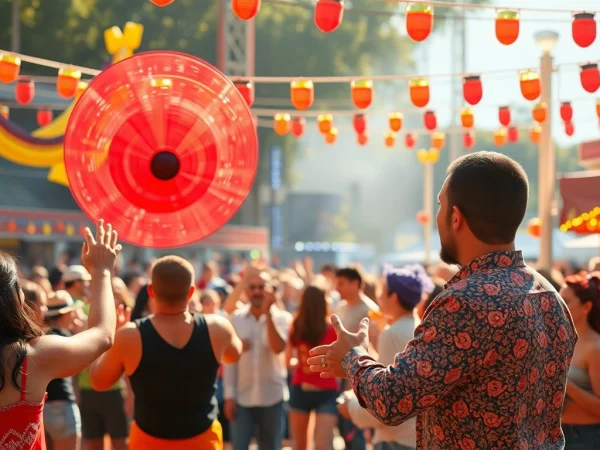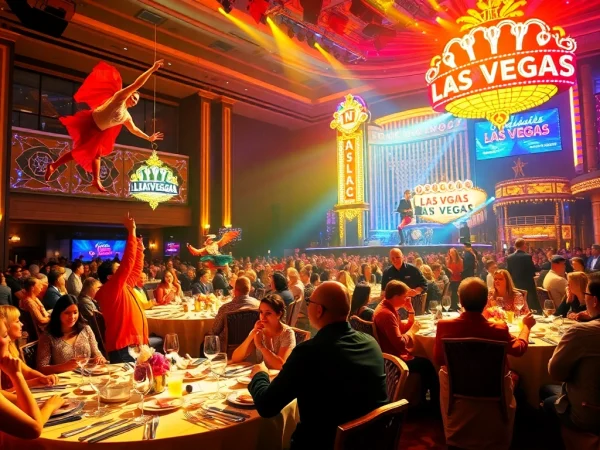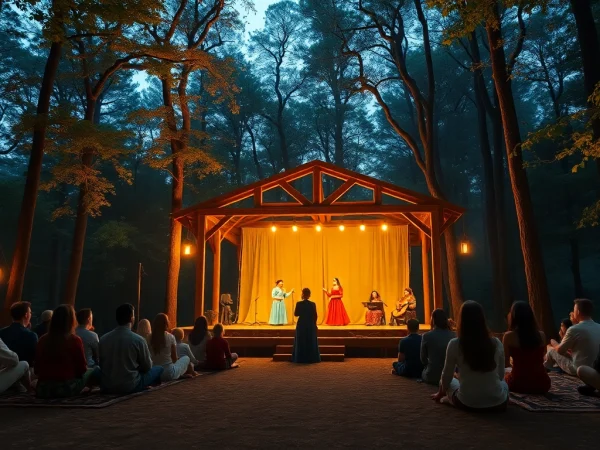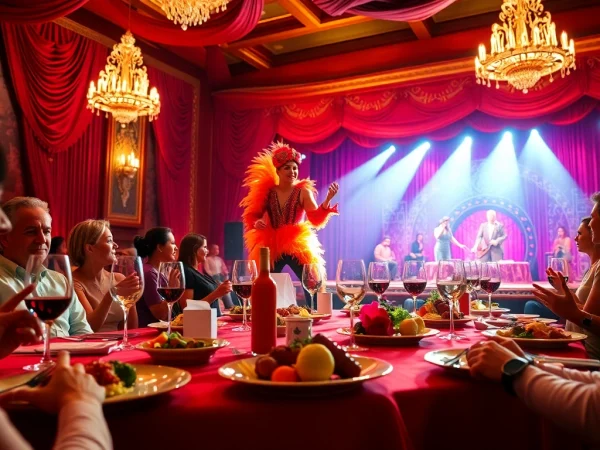Unpacking the Rich Tapestry of Rap Culture in Chicago: Artists, History, and Influence
1. Introduction to Rap Culture in Chicago
Chicago’s rap culture is a vibrant tapestry woven from the threads of diverse musical influences, social narratives, and street experiences. This city has produced several influential artists and styles, making it a vital hub in the hip-hop landscape. The evolution of rap culture in Chicago reflects the city’s socio-political climate and serves as a powerful form of expression among its youth. In this article, we will delve deep into the intricacies of Chicago’s rap scene, highlighting its roots, evolution, and the significant artists who have shaped it.
1.1 Understanding the Roots of Chicago Hip-Hop
The origins of hip-hop in Chicago can be traced back to the late 1970s and early 1980s, coinciding with the rise of hip-hop culture nationwide. Influences from various music genres, including funk, soul, and jazz, laid the foundation for the city’s unique sound. Clubs and block parties were prevalent, where local DJs and emcees began to craft their identities. Artists like Common Sense (now known simply as Common) emerged during this era, blending conscious lyrics with catchy beats, often reflecting the struggles and triumphs of life in Chicago’s urban neighborhoods.
1.2 Key Characteristics of Chicago Rap
Chicago rap is defined by its lyrical depth, storytelling ability, and diverse production styles. Unlike many other regions, where a single style dominates, Chicago’s rap encompasses a range of sounds—from the jazzy smoothness of early hip-hop to the hard-hitting beats of drill music. The narratives within the lyrics often delve into personal and communal struggles, gang violence, and social injustices, providing a raw and authentic reflection of life in the city.
1.3 Notable Phases in Chicago’s Rap Evolution
Chicago’s rap journey can be viewed in three significant phases: the rise of conscious rap in the late 90s, the mainstream breakout of artists like Kanye West in the early 2000s, and the emergence of drill music around 2010. Each phase brought forth unique sounds and messages, making Chicago a cradle of evolving cultural expression. Drill music, in particular, captured international attention for its aggressive beats and starkly real narratives about street life.
2. Influential Artists Shaping Chicago’s Rap Scene
Chicago’s rap scene has produced a plethora of artists who have significantly influenced not only the city but the global rap landscape. Their contributions range from paving the way for new sounds to reshaping how stories are told through music.
2.1 Pioneers: Common and Lupe Fiasco
Common and Lupe Fiasco are revered figures in Chicago’s hip-hop history. Common is known for his thought-provoking lyrics that often address societal issues and personal introspection. His album “Be,” produced by Kanye West, remains a landmark project that characterized 2000s hip-hop with its soulful beats and uplifting messages.
Lupe Fiasco, on the other hand, brought a different flavor to the game, emphasizing lyrical complexity. Albums like “Food & Liquor” challenged mainstream norms and showcased the potential of rap as an art form. His ability to weave intricate narratives that resonate with a wide audience helped solidify his status as one of Chicago’s premier artists.
2.2 The Rise of Drill Music and Its Icons
The advent of drill music, characterized by its dark, gritty beats and lyrics, marked a pivotal moment for Chicago rap. Artists like Chief Keef, Lil Durk, and King Von not only popularized the genre but also brought national attention to the city’s music scene. Chief Keef’s “I Don’t Like” became an anthem for a generation, pushing the boundaries of conventional rap while highlighting the realities of life in Chicago’s neighborhoods.
This genre’s impact has been polarizing, often associated with violence. However, it also serves as a voice for those living in marginalized communities, offering insight into the struggles they face. The storytelling within drill lyrics provides listeners with a raw perspective on life, reflecting both the artist’s personal experiences and broader cultural issues.
2.3 Emerging Voices in Chicago Rap
As the landscape of Chicago rap continues to evolve, new artists are emerging to carry the torch forward. Names like Polo G, Juice WRLD (though he has sadly passed), and Vic Mensa have begun to shape the sound of contemporary Chicago rap. Polo G’s introspective lyrics and melodic flow have struck a chord with younger audiences, while Juice WRLD’s genre-blending and emotional lyrics have contributed to a new wave in the hip-hop scene.
These artists bring fresh narratives and innovative styles, reflecting the dynamic cultural identity of Chicago’s youth. Their success has opened doors for collaboration across genres and platforms, further enriching Chicago’s hip-hop legacy.
3. Cultural Significance of Rap in Chicago
Rap music in Chicago transcends entertainment; it embodies cultural significance and serves as a crucial form of expression and resistance for marginalized communities. It reflects societal issues, fosters community solidarity, and has a profound impact on local and global music trends.
3.1 Rap as a Form of Expression and Resistance
Chicago rapper’s lyrics often serve as a commentary on systemic issues such as inequality, violence, and social injustice. Through their music, artists articulate the feelings and frustrations of their communities, challenging mainstream narratives and calling for change. This impact of rap as a vehicle for social commentary is particularly evident in Chicago’s drill scene, where artists candidly explore the ramifications of living in conflict-ridden areas.
3.2 The Role of Community and Collaboration
Collaboration among Chicago artists is a hallmark of the city’s rap culture. Tracks often feature multiple artists, creating a sense of camaraderie and collective identity. This collaborative spirit extends to grassroots organizations and initiatives aimed at providing support and resources for local rappers, emphasizing the importance of community in nurturing talent. Programs that focus on mentorship, production education, and performance opportunities play a pivotal role in fostering the next generation of Chicago rappers.
3.3 Impact on Local and Global Music Trends
Chicago rap has had a profound influence on music trends both locally and internationally. The drill movement, for example, has inspired similar sounds in other cities and across the globe, impacting the direction of hip-hop as a whole. Additionally, collaborations between Chicago artists and mainstream figures have led to a merging of styles, further pushing the envelope on what constitutes rap music today. The city consistently showcases emerging artists at festivals and in national media, solidifying its standing as a cultural leader in the music industry.
4. The Evolution of Chicago Rap Beats and Styles
The sound of Chicago rap has progressed considerably over the past decades, with various influences shaping its distinct beats and styles. This evolution not only underscores the city’s creative ingenuity but also highlights its adaptability in a rapidly changing musical landscape.
4.1 Origins of the Chicago Sound
The early Chicago hip-hop sound was characterized by samples from jazz and funk, coupled with live instrumentation. Artists like Common utilized this style, infusing their tracks with soulful melodies that resonated with a broad audience. The uniqueness of Chicago’s sound became widely recognized as artists began to create a distinct local identity within the larger hip-hop movement.
4.2 Variants: From House Beats to Drill
As hip-hop evolved, so did the musical influences that converged within Chicago. The transition from soulful beats to the more aggressive approach of drill music marks a significant shift in the genre. Drill music’s heavy basslines and syncopated rhythms reflect the city’s prevailing urban culture, effectively encapsulating its gritty realities while resonating with a new generation of listeners eager for authenticity.
Additionally, the rise of trap music influenced the production styles in Chicago, blending melodic elements from genres like R&B and electronic music with rap, thus further diversifying the sound landscape.
4.3 Future Trends in Chicago Rap Production
Looking ahead, the future of Chicago rap production seems promising, with artists increasingly experimenting with innovative sounds and cross-genre collaborations. The integration of digital technology and social media platforms has democratized music production, allowing aspiring artists to reach wider audiences without traditional industry barriers. As genres continue to blend, expect Chicago to remain at the forefront of musical innovation.
5. Conclusion: The Future of Rap Culture in Chicago
The landscape of rap culture in Chicago is in constant flux, shaped by the narratives of its artists and the realities of their environments. The city’s rap scene continues to flourish, providing insights into both personal and collective experiences.
5.1 The Ongoing Influence of Chicago Rappers
Artists from Chicago have continuously broken boundaries, shaping the sound of contemporary hip-hop and serving as role models for the next generation of musicians. The cultural and social impact of their music emphasizes the importance of local narratives in shaping national conversations around inequality and youth identity.
5.2 Opportunities for New Artists in a Changing Landscape
As the environment evolves, new opportunities arise for aspiring artists. Initiatives supporting local talent, coupled with changing media landscapes that emphasize diversity, will allow Chicago’s rap scene to thrive further. With resources readily available for production and collaboration, the future looks bright for emerging voices.
5.3 Embracing Diversity in Chicago’s Rap Scene
Chicago’s rap scene is a true reflection of the city’s diversity. Embracing this diversity will be crucial for the evolution of the genre, leading to richer narratives and broader appeal. From the intersections of race, culture, and socio-economic realities, Chicago rap serves not only as an art form but also as a significant cultural movement that champions inclusion and authentic representation.
